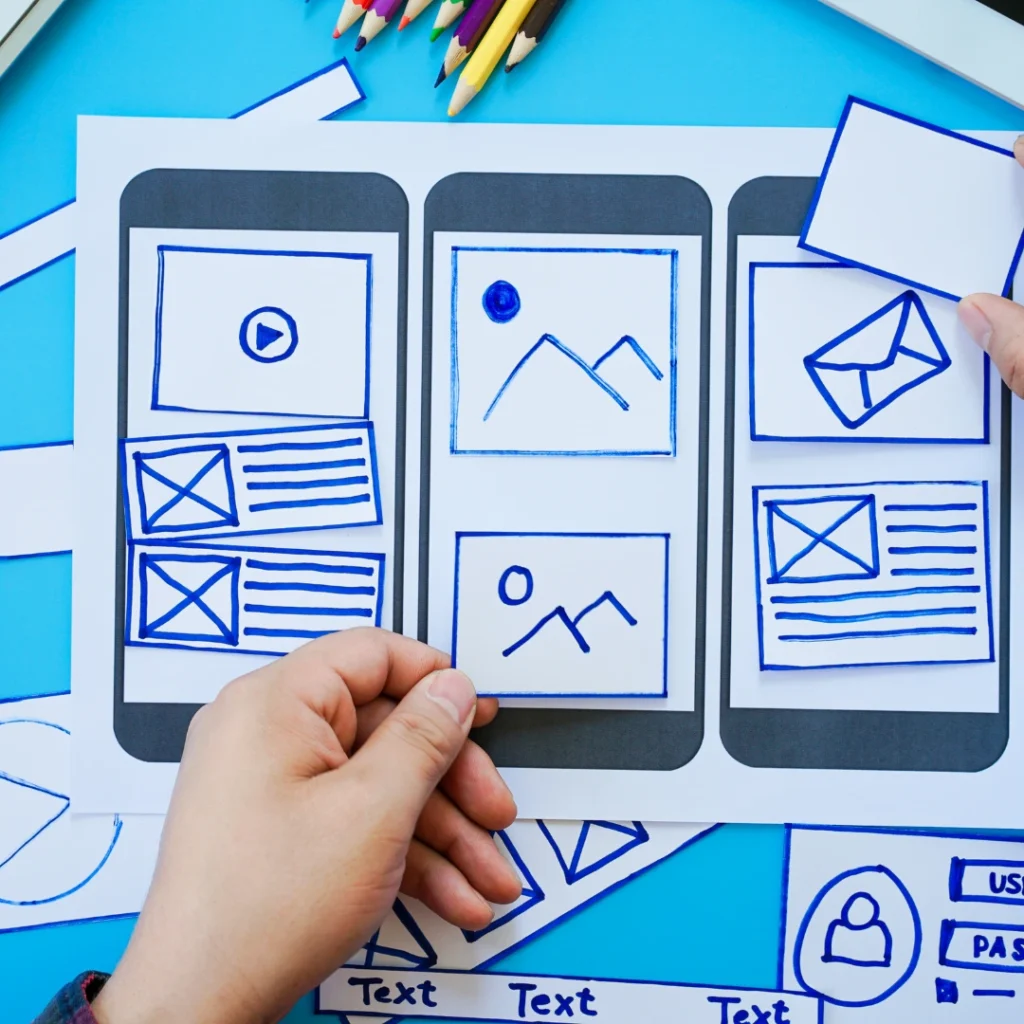Introduction
Becoming a UX designer is one of the most rewarding career paths in the digital world. As companies increasingly focus on delivering exceptional user experiences, skilled UX designers are in high demand. This guide explains how to become a UX designer, the essential skills you need, the tools to master, and how to build a portfolio that attracts employers.

Essential Skills for UX Designers
Empathy and User Understanding
UX design starts with empathy. Understanding users’ needs, frustrations, and goals is critical for creating effective solutions. Empathetic designers can predict pain points, prioritize user needs, and design experiences that feel intuitive.
Example: Conducting user interviews and observing real interactions with a website can reveal hidden challenges, helping you create more user-friendly solutions.
Problem-Solving and Analytical Thinking
UX designers translate research into actionable solutions. They analyze workflows, identify bottlenecks, and propose design improvements that enhance usability.
Tip: Practice by redesigning existing apps or websites and documenting how your changes solve user problems.
Communication and Collaboration
UX designers work closely with developers, product managers, marketers, and stakeholders. Strong communication ensures your design vision is implemented effectively and meets user needs.
Design Thinking and Creativity
Design thinking involves ideation, prototyping, testing, and iteration. Creativity helps UX designers find innovative solutions to complex problems while keeping user goals in mind.
Education and Learning Path
Formal Education
Degrees in Human-Computer Interaction, Graphic Design, Psychology, or Computer Science provide a strong foundation for UX careers.
Online Courses and Bootcamps
Platforms like Coursera, Udemy, Interaction Design Foundation, and Springboard offer practical, project-based training. Bootcamps often provide mentorship and portfolio guidance, accelerating your career entry.
Self-Learning and Practice
Building your own projects, conducting usability studies, or redesigning apps can enhance skills and create portfolio material. Constant practice is key to mastering UX.
Popular UX Tools
Design and Prototyping Tools
- Figma: Collaborative UI/UX tool for wireframes and prototypes.
- Adobe XD: Create interactive prototypes and test flows.
- Sketch: Vector-based design platform for macOS users.
Analytics and Testing Tools
- Google Analytics: Tracks user behavior on websites.
- Hotjar: Heatmaps and session recordings reveal interaction patterns.
- Crazy Egg: Helps visualize click, scroll, and engagement data.
Pro Tip: Learning one design tool deeply is better than spreading yourself too thin across multiple platforms.
Building a UX Portfolio
Showcase Real Projects
Your portfolio should include case studies showing research, wireframes, prototypes, testing, and final outcomes. Highlight your thought process and problem-solving skills.
Emphasize Problem-Solving
Explain challenges, design decisions, and how your solutions improved the user experience. Include before-and-after comparisons to demonstrate impact.
Include Metrics
Whenever possible, add measurable results such as increased engagement, faster task completion, or higher conversion rates. This strengthens your credibility as a UX professional.
Career Opportunities in UX
Common Roles
- UX Researcher
- Interaction Designer
- Product Designer
- Usability Analyst
- Information Architect
Industries Hiring UX Designers
UX designers are needed across technology, e-commerce, finance, healthcare, gaming, education, and more. Any organization with digital products requires UX expertise.
Salary Expectations
UX design offers competitive salaries worldwide. Entry-level roles may start lower, but experienced designers with strong portfolios can earn high-paying positions and opportunities for remote work.
The Future of UX Careers
Emerging Trends
- AI-driven design: AI tools assist with user behavior predictions and adaptive interfaces.
- Voice and gesture-based UX: Interfaces like Alexa, Siri, and smart home devices are expanding UX opportunities.
- AR/VR experiences: Immersive technologies require new UX approaches.
Continuous Learning
UX is a dynamic field. Staying updated on tools, trends, and user behavior ensures long-term career growth. Lifelong learning through courses, workshops, and community involvement is essential.
Do I Need Coding to Become a UX Designer?
Not necessarily. UX focuses on research, design thinking, and problem-solving, rather than coding. However, basic knowledge of HTML, CSS, or JavaScript can be beneficial:
- It helps communicate with developers.
- It clarifies what is technically feasible.
- It enables simple prototyping without relying on a development team.
In most cases, strong design, analytical, and research skills are enough to start a successful UX career.
Conclusion
Becoming a UX designer requires empathy, creativity, and analytical thinking. By mastering UX tools, building a strong portfolio, and continuously learning, you can launch a rewarding career in this fast-growing field. With the right skills and experience, UX designers not only shape digital products but also influence business success and user satisfaction.
FAQs About Becoming a UX Designer
Do I need a degree to become a UX designer?
No. Many UX designers are self-taught or graduate from bootcamps. Portfolio and skills matter more than formal education.
How long does it take to become a UX designer?
With dedicated study and practice, most beginners can enter the field within 6–12 months.
Can UX designers work remotely?
Yes. UX design is highly compatible with remote work, freelancing, and international opportunities.
What tools do UX designers use?
Figma, Adobe XD, Sketch, Hotjar, and Google Analytics are widely used.
What skills are most important in UX?
Empathy, problem-solving, communication, design thinking, and analytical thinking are key.

[…] Transform Your Career: How to Become a UX Designer with Skills, Tools, and Strategy Best Careers for the Future in Remote Work & Digital Nomad Lifestyle […]
[…] Transform Your Career: How to Become a UX Designer with Skills, Tools, and Strategy Best Careers for the Future in Remote Work & Digital Nomad Lifestyle Toxic Work Environment: Signs, Causes, and How to Escape It […]